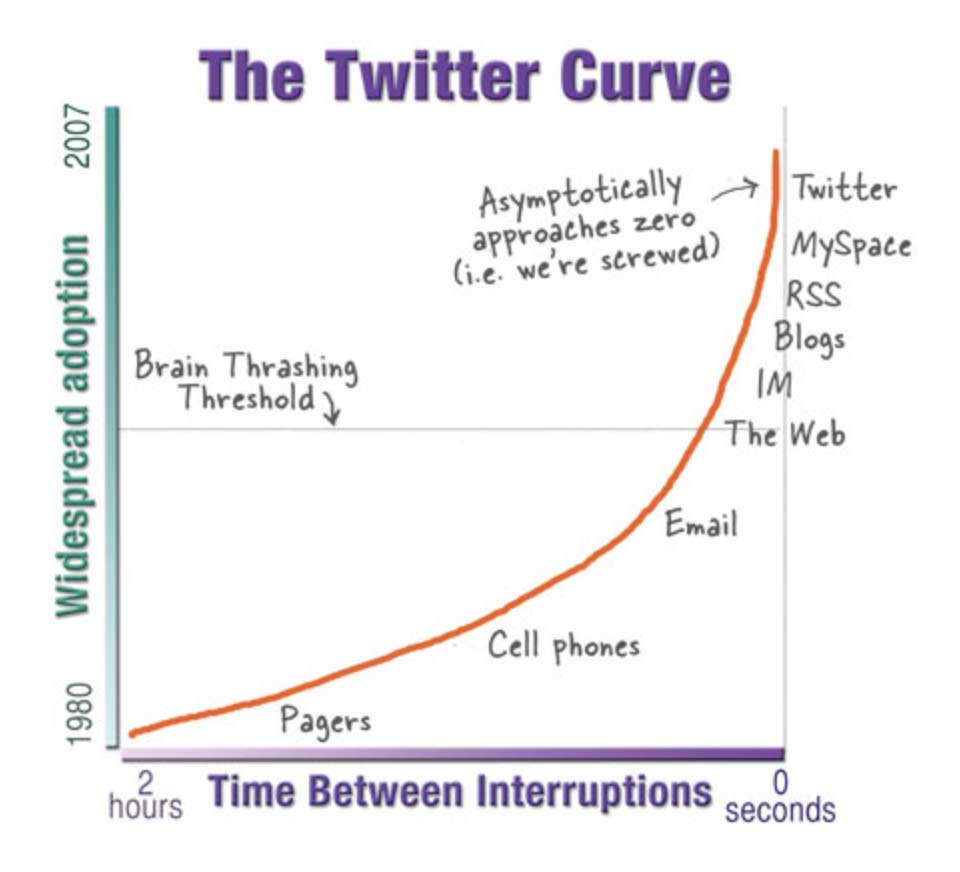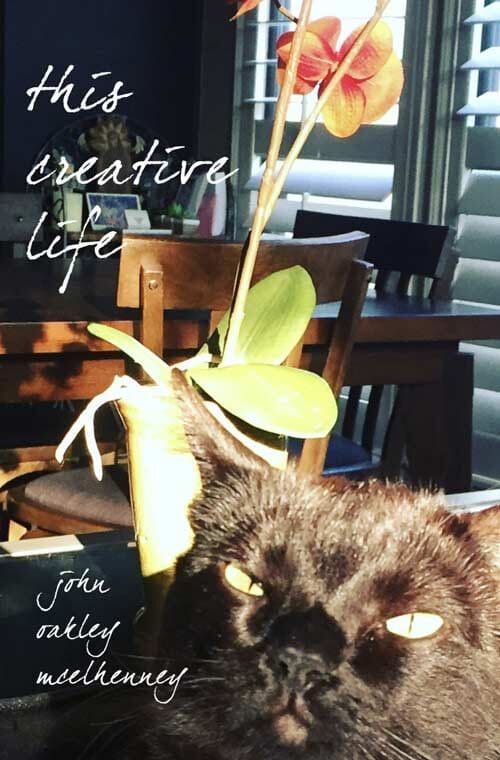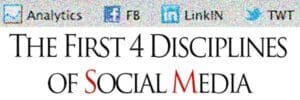Before our billionaire buffoon, Elon Musk bought and eviscerated the Twitter bird, we all had a lot of hope about the statusphere, the microblogging, the updates, provided by the new platform. Kathie Sierra was one of my favorite writers and commenters on all things digital, ux/ui, and user-centric. Here is an excerpt from her now-defunct website (Creating Passionate Users):
Twitter scares me. For all its popularity, I see at least three issues with Twitter:
1) it’s a near-perfect example of the psychological principle of intermittent variable reward, the key addictive element of slot machines.
2) The strong “feeling of connectedness” Twitterers get can trick the brain into thinking its having a meaningful social interaction, while another (ancient) part of the brain “knows” something crucial to human survival is missing.
3) Twitter is yet another–potentially more dramatic–contribution to the problems of always-on multi-tasking… you can’t be Twittering (or emailing or chatting, of course) and simultaneously be in deep thought and/or a flow state.
Kathie nailed it. Twitter was fun, instant, and in the early days, could drive significant traffic to websites that knew how to craft urgent tweets with a link. “You’ve got to learn this one…” Yadda yadda. We all started tweeting like mad and the bluebird quickly began its first growth spasms with the appearance of the Fail Whale. Twitter’s servers were overtaxed by the growth and frequency of its user’s interactions. The site would go down daily. Fun times for all involved.
What Twitter did initially was give us a simple platform for sharing information of value to those who followed us. There was an immediate arms race (how many followers do you have?) to grow your flocks of followers. Some of the big boys of social dominated the tweetwaves for a time. Guy Kawasaki and Chris Brogan took to constantly spamming their massive Twitter accounts with the same tweet, hour after hour. I asked them to stop, directly calling them out on this blog. They blocked me. They continue to automate their tweets. I’m sure Kawasaki still gets the big bucks for his X reach. But I think it’s spam they way they use their social media platforms.
The problem with Twitter was the firehose that was Twitter.com. The tweets accumulated so fast, it was impossible to manage. Twitter introduced PAUSE so you could stop the flow of tweets for short periods.
Then a great startup built Tweetdeck (now owned and ruined by Elon Musk in his misguided revamp) a way to watch and respond to multiple tweetstreams. Tweetdeck became my Twitter management system for years. Even after Twitter bought it and gutted some of its best features, it was a great tool. And then, the greater *tool,* Mr. Musk made tweetdeck.twitter.com for subscribers only. His post to get people to pay $8 per month for a verification checkmark was a stupid move.
One of the problems with X and Twitter is the flood of information from unlimited and often bot accounts shouting tweets into your feed 24/7. They did a few things to get that under control. They killed the reach of your tweet. I left Twitter, on the day Musk killed the bird, I had over 50,000 followers over three accounts. My tweets would generate very little traffic on the sites I was writing and tweeting about. (What do they call it now, X-ing? Or FK-ing?)
As our phones became the center of our known universe, they were also becoming a problem. Twirps, bleeps, Slack-knock notifications, Teams notifications, all these ALERTS are getting between us and our ability to live an un-curated life. Our phones are with us. Our phones are listening to our emails and conversations over the apps. Interruptions come fast and furious until you get an Apple watch and set all notifications to silent.
Then you dial back the services you listen to. It’s the only way to take control of the important notifications always going off in our pockets.
But the damage or immediate response has been done. Clients, customers, colleagues, and friends often want immediate responses to their questions. Like a text message from your child is a priority, your Slack message from a colleague working from the UK and pinging your “channel” at 3 in the morning, is not important. That’s why asynchronous communication tools like Slack were built.
We’ve created expectations, and it is up to us to reset those expectations with our teams, our bosses, and our clients, that evenings and weekends are not “quick response” times. I had a client complaining that their messages left for me at 6:30 pm were not being responded to until 6:00 am the following morning. “My phone goes into ‘off hours’ notifications after 6:00 pm,” I said. The client did not take it well. We worked through it.
Today I need less distraction. My kids are in college, so I need less critical updates from them. My work is *so* global that we’re all used to Slack channels containing conversations that we can revisit at any time. And if there’s an urgent request, you might want to contact the person directly. I want my personal life to be less interrupted by work. And I even want my personal life to be less interrupted by anything that is not related to my goals or my family. Marketing to me via text messages on the weekend is going to get your efforts blocked and reported.
For me, I’m in the middle of a FB-free August. I killed all of my X accounts. And I’m dialing back my NYTimes Online addiction by using an RSS feed without images or videos. And finally, I’m trying to ween myself off TV news. Today, for example, stories of horror in Hawaii are not essential for my work or my happiness. Quite the opposite.
I want fewer notifications. I don’t need tweets anymore. The statusphere I deal with are my girlfriend and my two kids. Work is full attention when I’m working and OFF when I am not working. X no longer brought me any real traffic. Facebook is marginal, but I will probably continue to feed the content streams of my two FB communities when I get back in September. We’ll see.
John McElhenney — let’s connect online
Facebook & LinkedIn & The Whole Parent
Please check out a few of my books on AMAZON.
Especially this one, about living a creative life of intention and joy.




![Read more about the article 8 Social Media Steps & 5 Goals – The Simplified Plan [INFOGRAPHIC]](https://uber.la/wp-content/uploads/2023/07/8-goals-social-300x230.jpg)